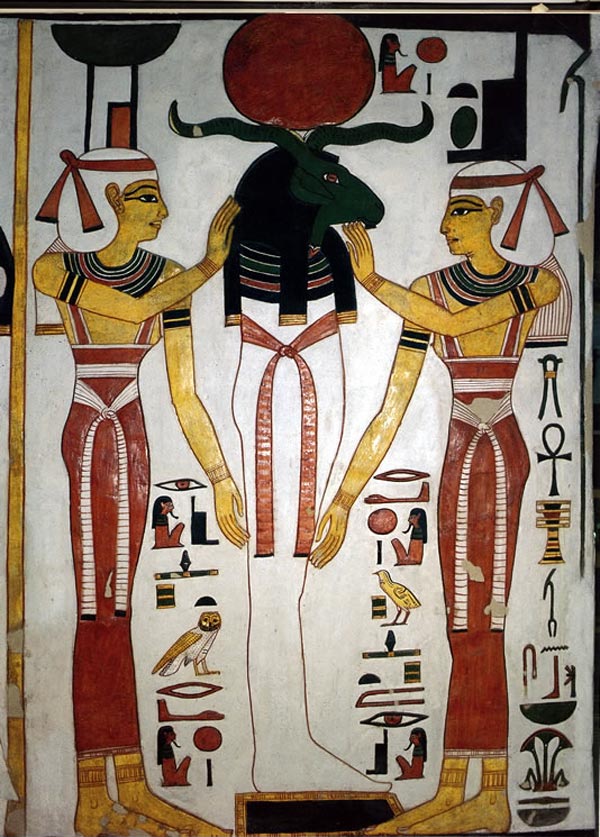This piece proved to be rather difficult to research with no given context. Our group has discovered that it is a mural in the Tomb of Nefertari, dated back to the 19th Dynasty. The piece depicts Osiris-Re being lifted from his prison in the sarcophagus by sister goddesses, Isis and Nephthys. This demonstration of rebirth and renewal was achieved solely through the unity of Osiris and solar-deity, Re. This is perhaps the reason that the mummified figure in the center is a fusion of the two, known as Osiris-Re. This unification would be imperative for Queen Nefertari to achieve her own rebirth in the afterlife. The only problem in theory was that as a female, the Queen might struggle to carry out the activities of the two male gods. For this reason, the artists depicted the Queen as having assumed a fluid post-mortem sexual identity. One in which Nefertari had been given some temporary masculine aspects. This is depicted both pictorially and in writing for the royal women throughout the tombs of the Ramesside queens. In writing, the royal women are referred to with the masculine grammatical gender. Pictorially, though not in this piece, these women are shown with the typical male red-brown skin tones instead of the yellow skin tones used to show women. This trait however is not used on the piece we are viewing. In this piece the goddesses, Isis and Nephthys, are shown with the canonical yellow skin tones. These two were crucial for the complete resurrection of the solar and Osirian god, and thus, Queen Nefertari in the afterlife. http://mathisencorollary.blogspot.ca/2014/12/o-christmas-tree-o-christmas-tree-thy.html http://members.bib-arch.org/publication.asp?PubID=BSAO&Volume=8&Issue=2&ArticleID=4 http://www.mariarosavaldesogo.com/isis-nephthys-ancient-egyptian-solar-iconography/
